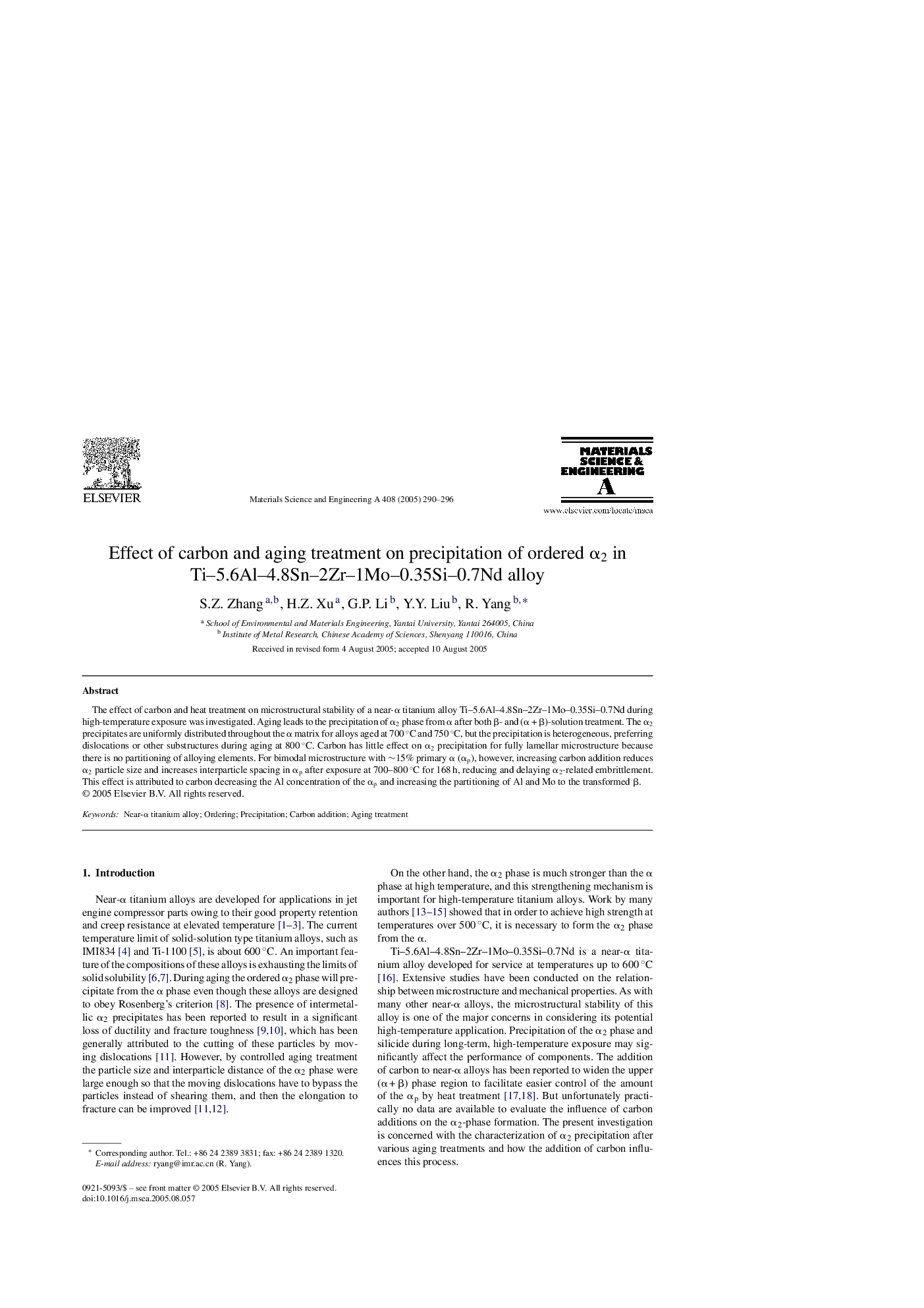| Article ID | Journal | Published Year | Pages | File Type |
|---|---|---|---|---|
| 9795785 | Materials Science and Engineering: A | 2005 | 7 Pages |
Abstract
The effect of carbon and heat treatment on microstructural stability of a near-α titanium alloy Ti-5.6Al-4.8Sn-2Zr-1Mo-0.35Si-0.7Nd during high-temperature exposure was investigated. Aging leads to the precipitation of α2 phase from α after both β- and (α + β)-solution treatment. The α2 precipitates are uniformly distributed throughout the α matrix for alloys aged at 700 °C and 750 °C, but the precipitation is heterogeneous, preferring dislocations or other substructures during aging at 800 °C. Carbon has little effect on α2 precipitation for fully lamellar microstructure because there is no partitioning of alloying elements. For bimodal microstructure with â¼15% primary α (αp), however, increasing carbon addition reduces α2 particle size and increases interparticle spacing in αp after exposure at 700-800 °C for 168 h, reducing and delaying α2-related embrittlement. This effect is attributed to carbon decreasing the Al concentration of the αp and increasing the partitioning of Al and Mo to the transformed β.
Related Topics
Physical Sciences and Engineering
Materials Science
Materials Science (General)
Authors
S.Z. Zhang, H.Z. Xu, G.P. Li, Y.Y. Liu, R. Yang,
